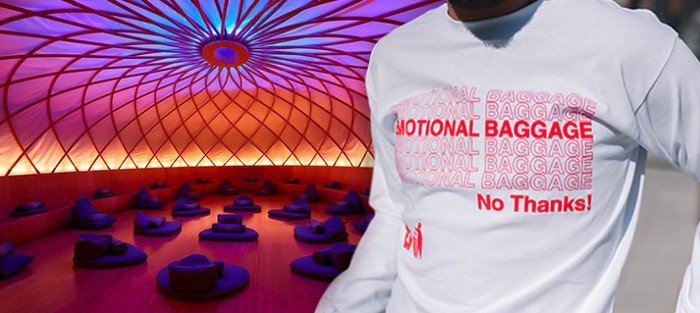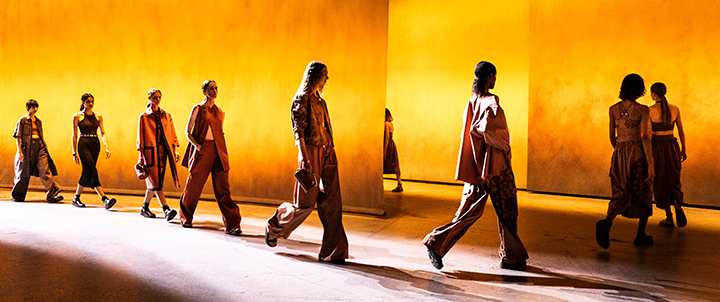2020 Macro Trend: Anxiety Economy

The COVID-19 pandemic has left cities around the world broken and in need of humanitarian and financial relief. Suddenly faced with the emotional implications of self-isolation, consumers are seeking digital sources of social interaction and wellness to combat the chaos of the unknown. Be it anxiety or loneliness, stigmas around mental health are shifting. There’s a growing awareness around how to recognize and treat mental illnesses, and brands are engaging with consumers’ emotional needs now more than ever.
Anxiety is already the most common mental health disorder in the US, affecting 18% of Americans each year and nearly one-third of Americans over their lifetimes, according to the Anxiety and Depression Association of America. Although studied before in relation to other disasters, the mental health stressors associated with the COVID-19 crisis have never been consolidated into a single global pandemic as they are now. According to Yuval Neria, the Director of Trauma and PTSD at the New York State Psychiatric Institute and a professor of psychology at Columbia University Medical Center, the emotional ramifications of this outbreak could surpass those of a world war.
As of April 2, 2020, more than 6.6 million Americans have filed for unemployment and billions have been sent into isolation. Healthcare workers on the frontline of the pandemic are faced with limited resources and an insurmountable number of cases, resulting in adverse psychological effects. Nurses, women, and those within close proximity to epicenters are more susceptible to experiencing depression (50%), anxiety (45%), insomnia (34%), and distress (72%). Those who have been forced to work remotely for the foreseeable future are now juggling health concerns and mounting anxiety alongside their jobs and families, leaving them at a higher risk for stress, loneliness, burnout, and depression.
Social media and technology have long faced scrutiny for their effects on our mental health. Now, digital platforms are creating a sense of togetherness to enhance our mental and emotional wellbeing. Virtual therapy, happy hour via Zoom, and online workouts are experiencing a spike in interest, as consumers adapt to the physical distance associated with the pandemic.
One in five adults in America experience a mental illness in a given year, yet only 40% of adults with mental illness received any treatment in the previous year, according to the National Alliance on Mental Illness. While there is still no vaccine for coronavirus or a cure-all for anxiety, there are ways to manage the emotional backlash. Treatments like EMDR and microdosing combat symptoms associated with stress disorders, while acupuncture mats, weighted blankets, and meditation headbands help consumers calm their worries from the comfort of their own homes. The once niche telemedicine industry is struggling to meet demand, forcing companies to innovate with new services.
Facing unusual levels of stress, fear, and grief, consumers are placing more value on mental health and expect brands and employers to engage with their emotional needs in a sincere way. Technology has long faced scrutiny for its effect on our mental health, but now these same digital platforms are working to create a sense of togetherness to enhance our mental and emotional wellbeing. Virtual therapy, happy hour via Zoom, and online workouts are experiencing a spike in interest, as consumers struggle to adapt to the physical distance associated with self-isolation.
We are in the midst of an unprecedented time. Our entire lives, from work to social to emotional wellness, have changed in an instant. The retail industry braces for lasting impact as store closures and furloughs present new challenges. These recent and dramatic shifts in consumer behavior have made predicting demand more difficult for those who rely on past sales, and ever more necessary for those who rely on current and past selling. Those hoping to prevail through the current pandemic will need to shift their focus to understanding shifting consumer mindsets.
Micro Trends
1. Intentional Retail
In the wake of the COVID-19 pandemic, brands are pivoting their regularly programmed content and customer service to not only embrace, but spark dialogue around mental health and self-care. Forward thinking companies are coping with their uncertain future by offering products that have a thoughtful and optimistic outlook. In today’s turbulent retail landscape, it’s become clear that brands need to do more than sell things, and with a consumer base that’s looking to purchase with purpose, brands should engage their emotional needs in a meaningful way.
2. Social Circle
Fueled by the isolation and loneliness brought on by COVID-19, consumers are seeking new ways to digitally engage with their closest companions. Social media has long faced scrutiny for its effects on our mental health. Now it’s providing new ways to help enhance and build relationships: happy hours are being held on Zoom, concerts are taking place over Instagram Live, and apps like WhatsApp have seen a 40% increase in usage due to the pandemic. As consumers shift into smaller, tight-knit groups, they will value brands that also promote meaningful connections over multiple connections.
3. New Age Wellness
According to the Anxiety and Depression Association of America, anxiety is already the most common mental health disorder in the US, affecting 18.1 percent of Americans each year and nearly one-third of Americans over their lifetimes. Today’s consumer, uneasy about our current state of anxiety, is no longer basing purchasing decisions on what product or ingredient they want to try, but rather how it will make them feel. As citizens across the United States (and the rest of the world) are being ordered to shelter-in-place, virtual wellness initiatives are becoming increasingly prevalent as brands pivot to mitigate the impact of COVID-19.
4. Workplace Worry
Between ‘always on’ culture and the rise of remote work, mental health has become increasingly problematic in the workplace. Now, that we’re isolated from one another, the threat of burnout is less visible and even more important to address. Recent work by the World Health Organisation (WHO), has recognized workplace burnout as a chronic health condition, giving legitimacy to this conversation. Workplace wellness isn’t just about health and dental plans. Instead, companies are prioritizing holistic health and financial wellness programs to attract and maintain talent during these unprecedented times.
By The Numbers

If you’re interested in the full Anxiety Economy report or want to learn more about trends that are growing — and dying, please contact hello@trendalytics.co


